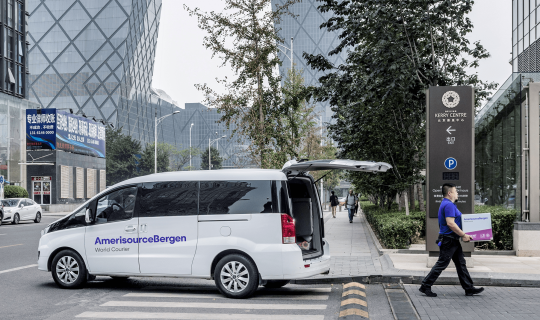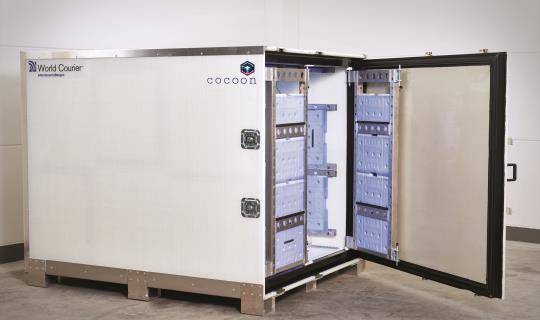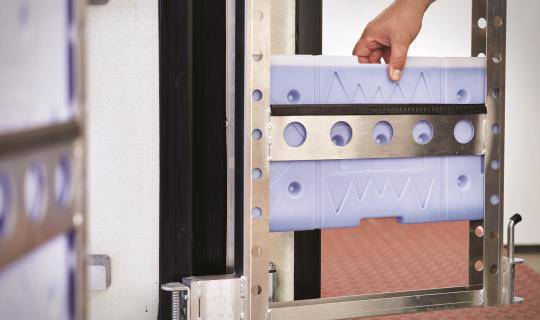Article: New Ways to Keep Your Cool
By World Courier
The global pharmaceutical industry will spend more than $8 billion on cold chain logistics in 2014
That growing number represents the increasing emphasis manufacturers and their distribution partners are placing on mitigating temperature excursions and protecting the integrity of both finished product and clinical trial samples. But what is really driving that spend upward? Where are the innovation points and critical changes that can impact your supply chain — and your investment in it?
Based on our experience managing transport for temperature-controlled products to virtually every country in the world, World Courier has identified six key trends that are poised to impact the market in 2015. Consider these points (and build them into the discussions you have with your logistics partners) to ensure continued effectiveness for your most sensitive supply chain.
1. New, customized temperature ranges grow in demand
he period of blockbuster drugs is coming to a close, and sponsors are working on customized medications for patients with rare diseases. As new products enter the development phase and the market, temperature needs are also evolving. Transport partners are increasingly seeing requests for temperature ranges that fall outside of the “cold” environment, such as ambient/room temperature or “body temperature” transport for products that use the body’s own substances (blood, tissue, etc.) to fight disease.
As GDP/GTP regulation continues to require temperature control during the whole supply chain and drugs contain more and more high-value active pharmaceutical ingredients with a shorter shelf life and strict temperature requirements, pharma is seeing a range of temperature needs enter the supply chain. With things “heating up,” the industry is moving away from the term cold chain, and we’ll start to see more references to the more inclusive temperature-controlled transport.
2. Tracking technologies hold promise...but remain unproven for now
GPS equipment that can be used during air transport is one of the newest technologies in the temperature-control market. This technology is switched off and on during takeoff and landing, but is actively reading at all times. Although still a bit pricey, manufacturers shipping large pallet loads have found that their load sizes can bear the cost. And while geo-temp technology has a long way to go beyond its function as an alarm system (it can by no means be the final temperature monitoring solution or be used independently from the airline), this is an innovation the transport world is excited about.
3. More packaging options bring more peace of mind, more options, more potential for confusion
Many packaging manufacturers are developing their own vacuum insulated packaging (VIP) and phase change material (PCM) solutions for easier handling and storage — and both are the latest in packaging technology. At the same time, shippers are moving away from active and semi-active solutions like frozen and cooled water-based gel packs to pure passive solutions that include PCM.
While these new technologies provide more options than ever for safely transporting temperature-controlled materials, they also hold potential to create confusion around which packaging system can work most effectively and most cost-efficiently under specific circumstances. Logistics partners prove invaluable in helping manufacturers select the best systems for the transport route, as well as configuring the proper pre-conditioning of PCM and positioning of temperature monitors. Having an experienced logistics partner involved at the start of a clinical trial has actually proven effective for manufacturers both in terms of cost-effectiveness and custom solutions.
4. Airports are adapting and expanding to serve the healthcare market
Many key airline hubs have started to notice the pharma opportunity and implement temperature-controlled storage solutions, meaning product no longer shares space with commodities like fish and vegetables. It’s an exciting period of change; however, not many airports around the world offer true “controlled” storage. A manufacturer’s safest bet for avoiding temperature excursions is to use packaging that is independent of the supply chain and ensure the presence of a reliable partner during unloading/pickup and delivery/storage. Simply put, don’t rely on the supply chain to do the packaging’s job.
5. Validated quality has grown in importance - and industry stakeholders are racing to keep pace
Another effort airlines are undertaking is GxP certification. Some airports like Luxembourg have chosen independent GxP training, where others like Brussels are embracing the new IATA (International Air Transport Association) scheme. There is no doubt that this could become confusing for shippers, and may mean some airports end up duplicating their efforts. Nonetheless, GxP continues to drive quality control. In fact, in the face of these and other regulatory requirements, quality departments within pharmaceutical manufacturers are gaining more and more influence in the selection of vendors — from packagers to logistics partners. As a result, pharmaceutical companies are simultaneously gaining a broader understanding of their own quality needs across the supply chain and ensuring suppliers comply with regulations.
6. New global issues will require new adaptations from logistics providers
While trade restrictions have long been a matter in which logistics partners must be well-versed in order to add value, new global issues like Ebola and region-specific political unrest will increase the pressures on both pharma and its logistics partners when it comes to temperature, time and regulatory sensitivities. The most successful stakeholders will be the ones that can take key lessons learned from previous events and apply them swiftly in the face of new crises to maintain a seamless supply chain.
Monitoring each of these trends is how pharma can look at supply chain logistics through the lens of specific temperature-control needs. And while no solution is right simply because it is the newest, knowing what is possible is the first step in creating a distribution strategy that’s equal parts practical and innovative.



